

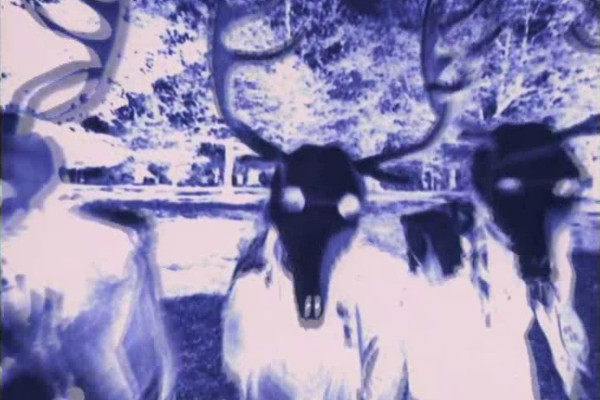
Young Martin (Dougal Rose) is visited by his dying grandfather and is constantly told he's in the way. While Martin is a little bit of a cocky kid - as most kids are, of course - it's hard not to feel sorry for him, as his granddad doesn't really have much rapport with him, and his mother doesn't stop moaning for five minutes. A somewhat mundane tale becomes develops a horror element in the last five minutes as Martin starts to see a pagan horn dance, and everything goes a bit "Ashes To Ashes meets The Wicker Man." A rewardingly bizarre entry for children's television.
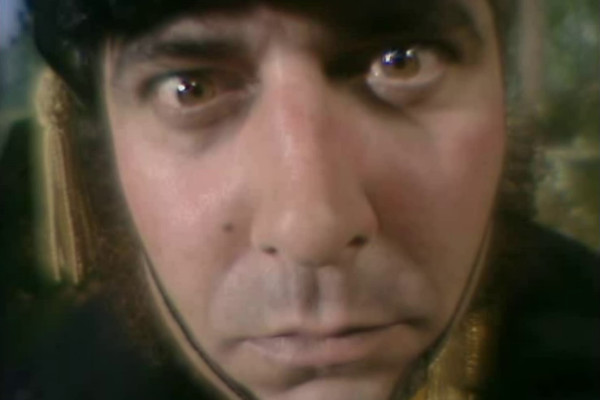
A charming episode featuring John Woodvine as Edward Pitter, a scientist who brings home a Fresnel lens and tapes it to a window, causing his children to see visions of the past. The children are played by Roy Jacobs in his last of three television roles, Sophie Ward in her first of many, and, in the first of two Shadows appearances, Gwyneth Strong, AKA Rodney's wife from Only Fools and Horses.
Written by husband-and-wife duo J.B. Priestley and Jacquetta Hawkes, this one suffers from the laboured exposition familiar to so many other Shadows episodes, but works via the charm and the chemistry of the cast: you really can believe they're Pitter's kids and that he loves them.
One major issue with this particular episode is that, despite somewhat contrived efforts to crowbar in some shock moments, it's very much a science fiction story, and so not really matching the remit of the series. It's a common complaint throughout this article, albeit a small one, and the episode almost breaks the top five here.
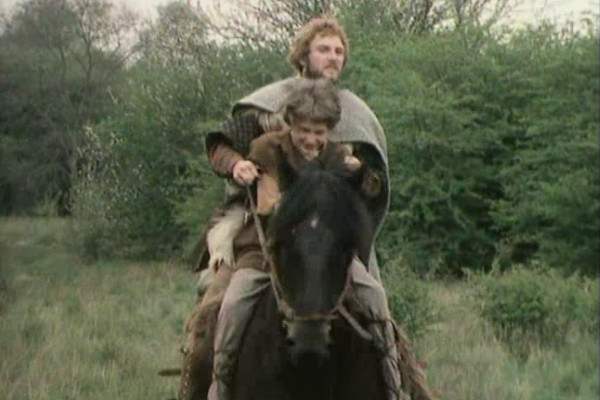
Written by Stewart Farrar (The Witch's Bottle) from a story by Anne Carlton, there is very much a "backdoor pilot" feel to this episode, and so it came to pass: two years later a six-part series of the same name aired. Like a lot of season three stories, it's not a "horror" tale, but it's suitably well made and put together to warrant a high placing here.
Perhaps far more interesting than the actual episode is Farrar's own personal life. When this episode was written, he was living in Ireland as High Priest of his own Wiccan covern, and was a devout Communist. With his life involving seven marriages to six women, and a polyfidelitous relationship, Farrar's life was colourful and well-lived, the full details of which would take up the same length as this entire article.
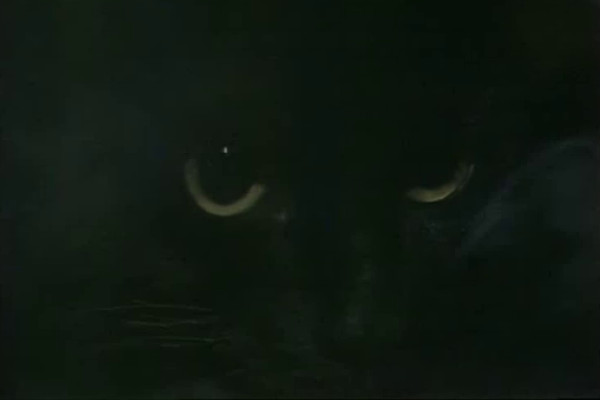
This tale of a witch nanny was written by Fay Weldon, a novelist who would go on to write, among others, The Life and Loves of a She-Devil and The Cloning of Joanna May. Some of Weldon's less family-friendly pedigree slips out as the titular HoneyAnn is at one point described as a "slut" in an episode that aims for an older, less patronised audience.
As the final episode, it's a nice return to the core concept of "horror for kids" that the series began as, though as it was made before the days of animal welfare in TV, one of the most inappropriately hilarious moments occurs with a cat that's clearly thrown in by a stage hand. For a fairly badly-made series, where a large number of episodes feature boom mikes on screen, then it comes as little surprise that the stage hand's... hands... can clearly be seen.
Directed by Pamela Lonsdale, the producer of seasons one and three, it was far from her only experience with cult TV as also on her resume are Rainbow, Aces of Wands and Chocky. However, perhaps the biggest debt the genre owes her is when, impressed by the work of PJ Hammond, she suggested to him that he write a pilot for a new series... which became Sapphire & Steel.
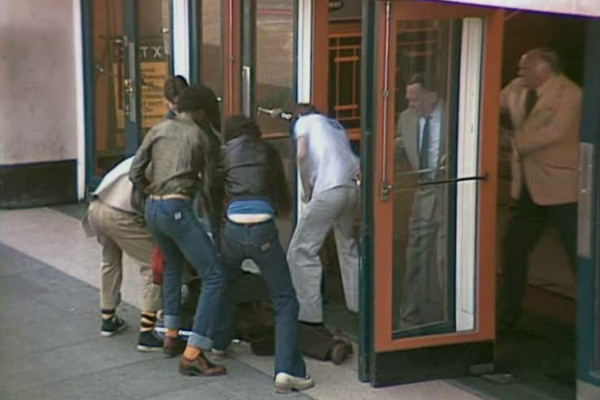
Season one was populated by the middle classes, with the majority of it filmed inside the studio. Here the viewers are plunged into a working class world of graffiti'd telephone boxes with smashed windows, and "large gin please" written on the the panes, along with tramps, harridan mothers and youth gangs. It could be argued that it's a somewhat patronising (albeit accurate) portrayal of some working class areas, in that there's violence threatened in nearly every scene... and that's just against the cat, who clearly wants to get away when he's called on to act.
Hannah Isaacson is a better child actress than the vast majority in season one, though her plaintive diction and middle class accent point to the limited talent pool of UK TV in the mid 70s, where even the local gang are quite posh. While receiving a very high ranking objectively, the episode falls down in that, once again, it doesn't really fit the horror genre, and is instead one girl's descent into some form of fantasy-based madness. There's also more than a little silliness when the struggling cat, given a "magic potion", gets a lion's roar. Overall, The Dark Streets of Kimball's Green is an interesting take on urban decay, complete with the near-fatal beating of an elderly man.... but as a horror story, it's non-existent.
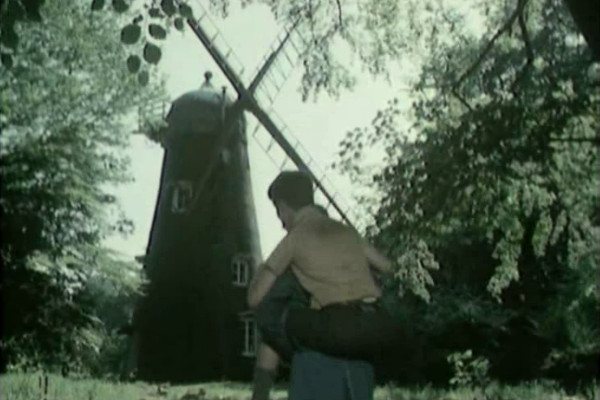
Written by Susan Cooper, Dark Encounter sees some of the mysteries and enigmas of its plot left unexplained. Partly crediting the audience with intelligence, and partly not resolving all its plotlines satisfactorily in the runtime, it's a rare season two episode in that it actually tells a horror story.
Alex Scott returns to a forgotten village of his childhood, only to find he has to face his fears, and that - in a heavily signposted revelation - his younger self still lives there. Graham Kennedy appears as his younger self, a role he seemingly acquired because of their strong visual resemblance rather than any latent acting ability, though this is one of the stronger Shadows stories, as evidenced by its high ranking.
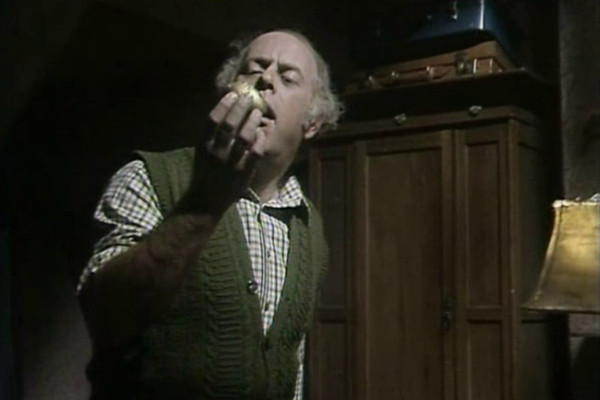
Shadows is a much-loved childhood series for many, but for some reason passed The Anorak Zone by, and was only watched for the first time when compiling this article. Perhaps it's this lack of nostalgic connection that leads to the conclusion that it's just an okay series, and not a great one. Bucking the trend somewhat is Zone favourite PJ Hammond (Sapphire & Steel, Ace of Wands, The Sweeney), constructing a story of a magician (Clive Swift) who discovers real magic.
Once more it's not really a "scary" story, but Hammond's scripts are always a delight, and he's excellent at crafting lonely, eccentric men who live in isolation (Ace of Wands: Peacock Pie, Sapphire & Steel: Assignment Four) and this is no exception. A great character study, and also further signs that Hammond never liked to write "down" to children: in one of the most shocking moments of the series, guest star Jacqueline Pearce is described as a "first class bitch".